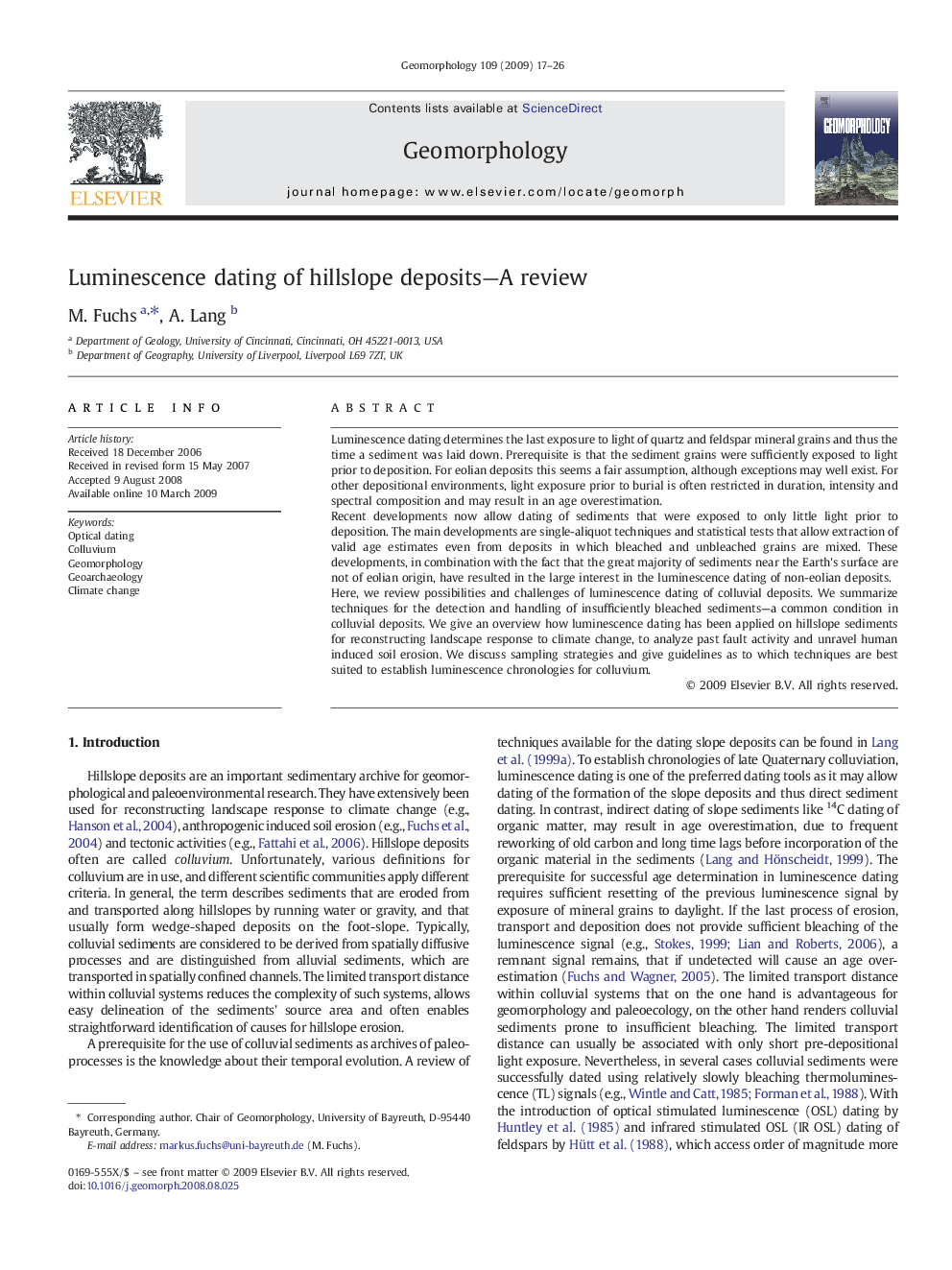| Article ID | Journal | Published Year | Pages | File Type |
|---|---|---|---|---|
| 4686344 | Geomorphology | 2009 | 10 Pages |
Luminescence dating determines the last exposure to light of quartz and feldspar mineral grains and thus the time a sediment was laid down. Prerequisite is that the sediment grains were sufficiently exposed to light prior to deposition. For eolian deposits this seems a fair assumption, although exceptions may well exist. For other depositional environments, light exposure prior to burial is often restricted in duration, intensity and spectral composition and may result in an age overestimation.Recent developments now allow dating of sediments that were exposed to only little light prior to deposition. The main developments are single-aliquot techniques and statistical tests that allow extraction of valid age estimates even from deposits in which bleached and unbleached grains are mixed. These developments, in combination with the fact that the great majority of sediments near the Earth's surface are not of eolian origin, have resulted in the large interest in the luminescence dating of non-eolian deposits.Here, we review possibilities and challenges of luminescence dating of colluvial deposits. We summarize techniques for the detection and handling of insufficiently bleached sediments—a common condition in colluvial deposits. We give an overview how luminescence dating has been applied on hillslope sediments for reconstructing landscape response to climate change, to analyze past fault activity and unravel human induced soil erosion. We discuss sampling strategies and give guidelines as to which techniques are best suited to establish luminescence chronologies for colluvium.
